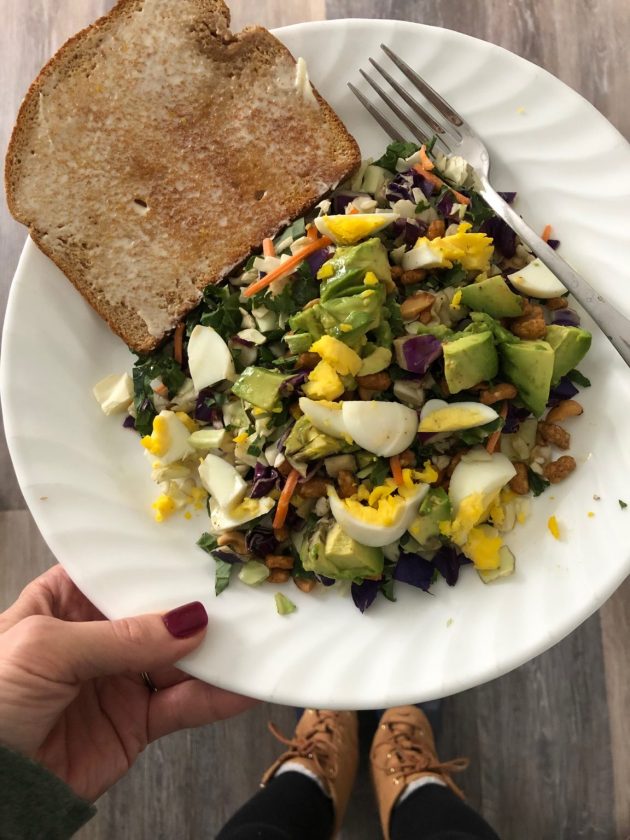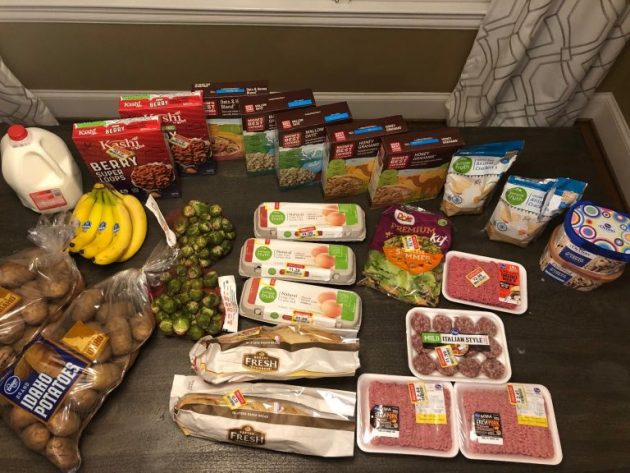“Costs have doubled for food. How do I budget when there’s nothing else to cut?” -a follower
I got this question awhile back on Instagram and I know this follower is not the only person feeling this. In this post, I want to share some encouragement for how to approach the rising costs of groceries…
1. Don’t Let the Media Dictate Your Beliefs
The goal of media is to get viewers. Viewers equal income. The more people who view, the more money advertisers will pay.
Guess what this often means? The media often relies upon sensationalism, hype, and fear as, sadly, this drives up viewership.
Just because a media website or TV personality is saying with authority and shock value, “Groceries have gone up by 50%!!!” does not mean that is necessarily true. Yes, many items have gone up in price, but I think you’d be hard-pressed to find any grocery store that has literally marked up every single one of their items by 50%.
So don’t let what you hear from the media dictate what you believe or incite fear. Do your own research and verify; don’t just blindly give into the hype and sensationalism and fear that often can be out there.

2. Choose Your Attitude
There will always be hard and frustrating things in life. There will always be good and beautiful things. We get to choose what we focus on.
We can either throw up our hands in despair over rising costs or we can choose to let it fuel our creativity. It’s your choice.
Stressing out or feeling frustrated does nothing to solve problems or help you. It only wastes a lot of mental energy.
I challenge you to choose to say, “I’m going to do the best I can with the resources, time, and ability I have. I’m going to approach my grocery budget with a can do, creative attitude and see how well we can eat with the grocery budget we have to work with.”
3. Do a Grocery Inventory
Take a good hard look at your grocery spending. Where are you spending the most money?
For instance, if you are spending a lot of money on produce, what about buying more of the items that are on sale or are regularly lower in cost instead of buying a big variety of items. We oftentimes will only buy 2-4 kinds of produce (whatever is on a good sale/marked down) and just eat a lot of that that week.
Or, if you are spending a lot on meat, try going meatless once a week or having meat as something you serve as a “condiment” not as the main thing (think meals like pizza, soup, sprinkled on salad).
If you are spending a lot on dairy, water down your milk for baking. Drink more water. Use less cheese. Cut back on sour cream use. Make your own yogurt.

4. Plan Your Menu Based Upon What’s on Sale
Instead of planning your menu based upon what sounds good, plan based upon what’s on sale. Look at the front page of your store’s sale flier — that’s usually where they advertise the “loss leaders”.
These are the sale items that the store is taking a loss or breaking even for you to purchase. The store is expecting that those loss leaders will lure you into the store to shop and then you’ll fill up your cart with all sorts of full-priced items, too.
Be a savvy shopper and mostly plan your menu upon those items that are on the lowest prices versus full-priced items and you’ll save a lot of money on your grocery bill!
Want to step up your savings even more? Plan your menu based upon what you already have on hand (check your cupboards/freezer/pantry) when planning a menu and grocery list.
5. Go Back to the Basics
Use this time of higher prices to motivate you to try some new things. Are you buying anything pre-packaged that you could easily make from scratch? Are you using mixes instead of making your own mixes?
Add more beans, rice, potatoes, and pasta to your meals. Make homemade soup and bread. Stick with more simple meals that have inexpensive ingredients.
Pay attention to how much your favorite meals cost approximately and eat more of the meals that are lower in cost. Look into the cost of buying in bulk from places other than the grocery store.

6. Practice the Buy Ahead Principle
Instead of pay full-price for items, try to buy the bulk of your groceries when they are at their lowest price. Designate a portion of your grocery budget to buying ahead for future weeks.
Start out with just $5-$10 to buying ahead. Look for items that are at least 50% off or more that you regularly use and buy enough for an extra week or two.
The more you do this, the more you’ll be able to plan your menu based upon what you already have on hand — and those things you have on hand will be things you’ve gotten for pennies on the dollar! And this will free up even more money in your grocery budget to dedicate to buying ahead even more!
What is your best advice and tips for someone feeling like the rising costs of groceries are making it hard for them to stick with their grocery budget?



